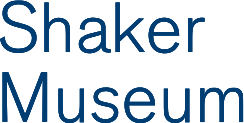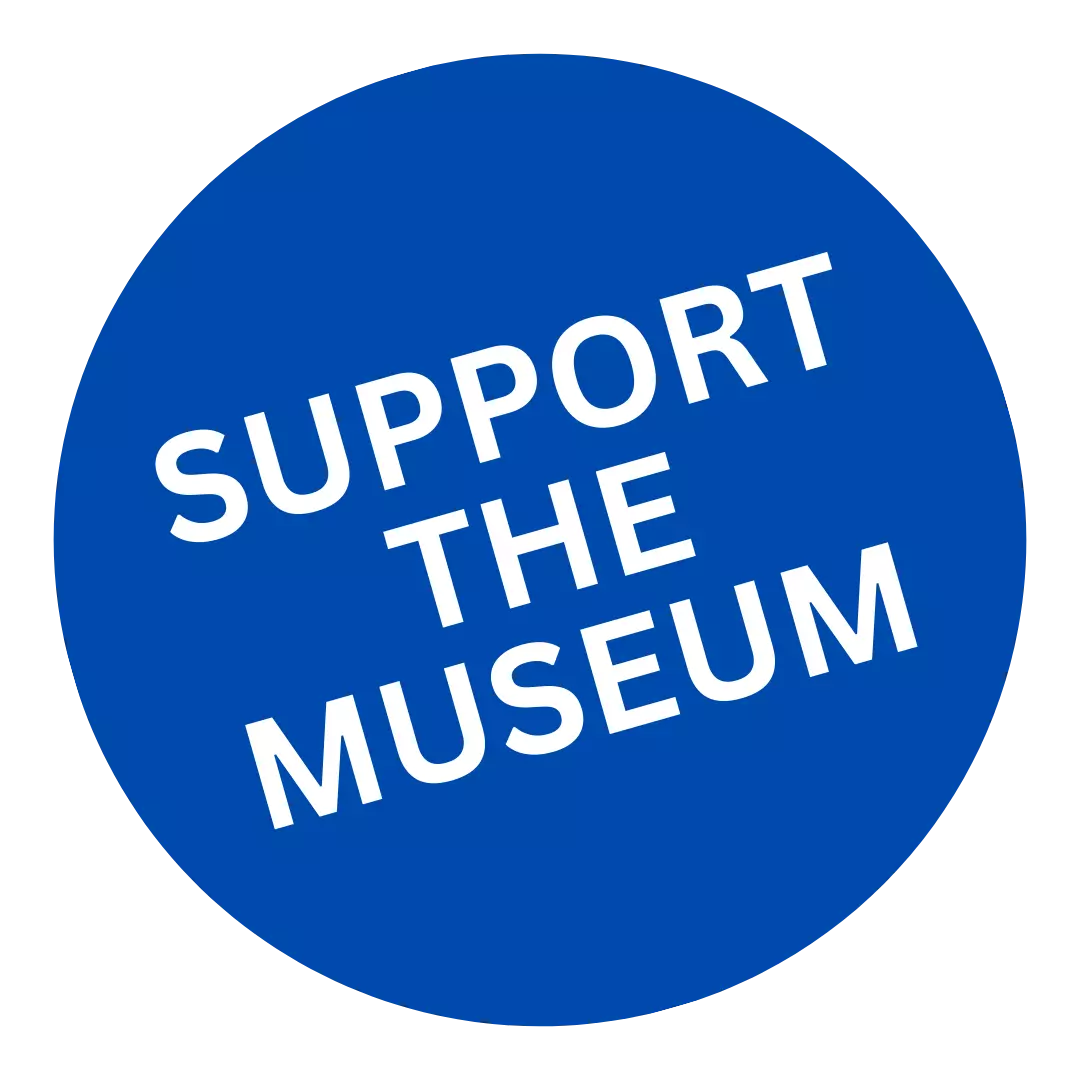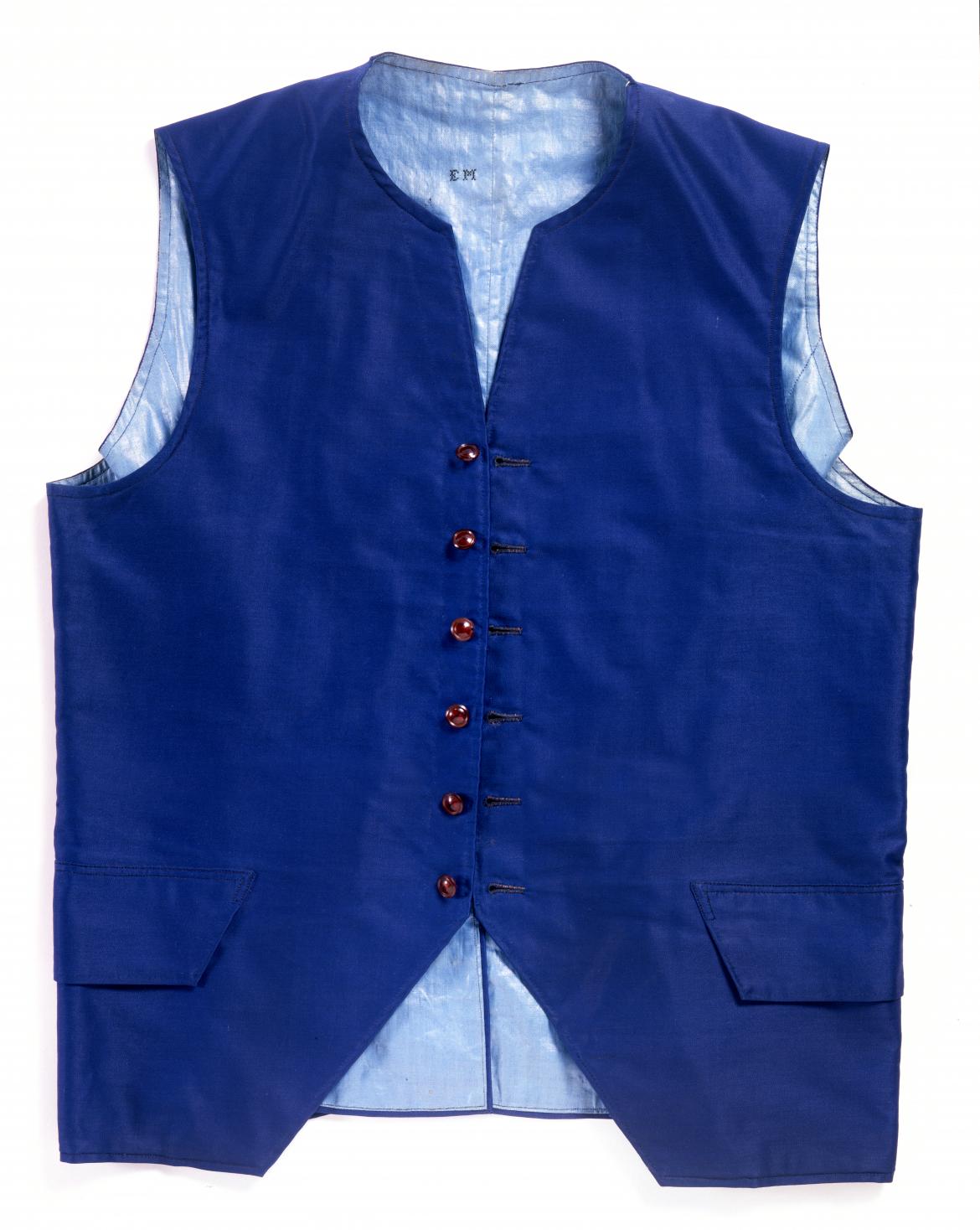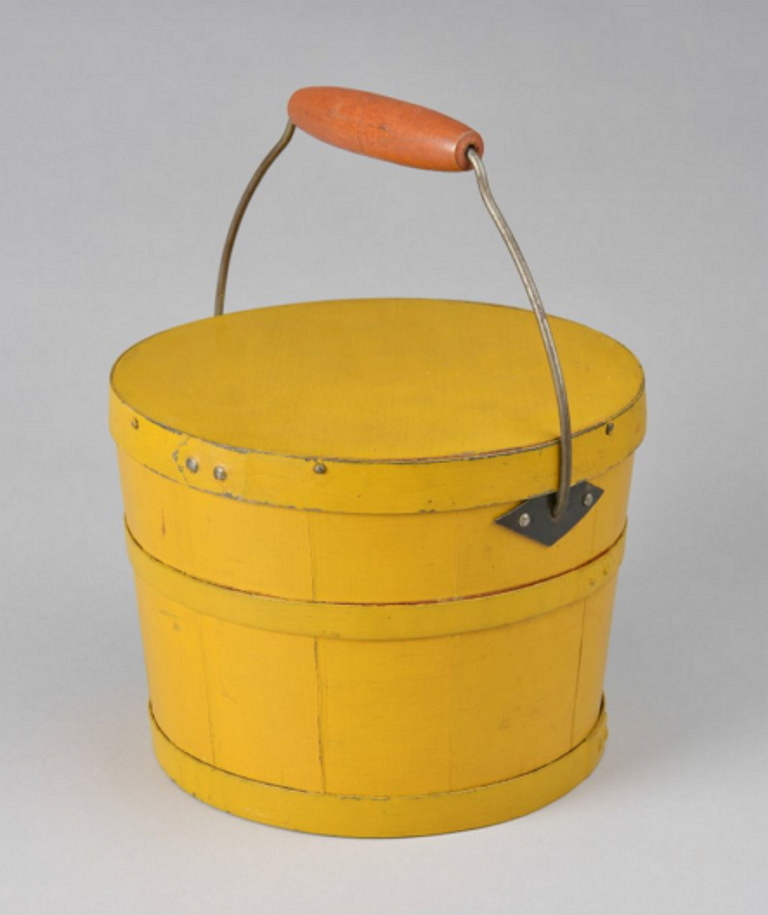Vest
Brother's vest of blue wool with cross-stitched initials "EM", ca. 1850, Mount Lebanon, NY
1840-1860
Description
Blue wool with two outer pockets, six-button front, and two tails on back. Light blue glazed cotton or linen lining. Two interior breast pockets and faced-on buttonhole placket with navy wool. Fabric of vest woven in a twill satin weave; lining material plain-woven.
Notes
Vests of either blue or "drab" were ubiquitous among Shaker brothers, who wore them over a white shirt and under a jacket. Writing on the history of Shaker clothing, Henry Blinn, Elder at Canterbury, wrote: "In 1832, the drab vest, which had been largely in use since 1810, was partially displaced by the introduction of a fine blue. While this color was generally used in the summer, the drab was retained for use in the winter. Blue seems to have been a favorite color for the summer... For winter use the blue was laid aside in 1840 and drab was established as the uniform color for vests, and continued to be used till 1854, when blue was again introduced."[1] Blue clothing was popular, but indigo, the plant that colored the dye, was expensive. A compromise between uniformity and economy was forged in 1866, when the Central Ministry issued to all the communities a "Dress Circular". The circular recommended that families within one community consolidate their dyes and dyeing chores: "Resolved, That the practice of each family in each society supporting a dye for the coloring of blue, is extremely and needlessly expensive, and perplexing to community interests, as many families are unable to manage a blue dye economically."[2] In order to achieve uniformity as cheaply as possible, the circular resolved that cloth for some garments, like woolens for coats, and finished products, like brothers hats, be purchased from the factories of the World. This vest was woven, dyed, and tailored by the Shakers. Stitched on the inside of the vest are the initials "E.M." that could refer to four possible owners: Edward Morris from the Canaan, NY community; Edgar Morton (1830-1900) from Mount Lebanon; Edward Mullien from Watervliet; or Elijah Myrick (1823-1890), who was an Elder in the Harvard, MA community. [1] Henry C. Blinn. "History of the Church of Mt. Lebanon, NY, No. 13." The Manifesto XX, no. 7 (July 1890) pp. 145-146. [2] Mount Lebanon Church Records III. Emma B. King Library, Shaker Museum and Library, Old Chatham, NY, p. 348.
Unknown





